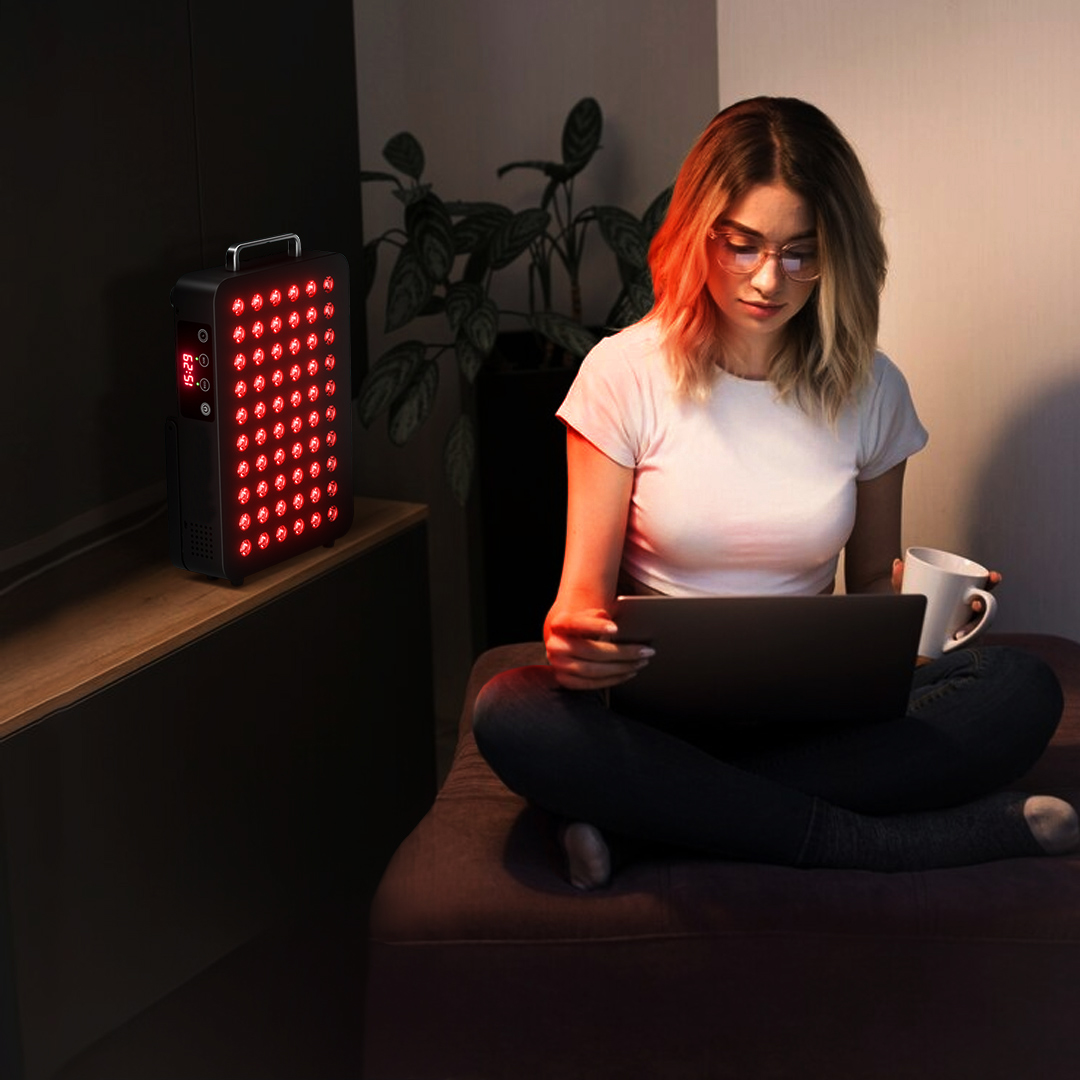![]() Free Shipping
Free Shipping ![]() Buy Now, Pay Later
Buy Now, Pay Later ![]() Eligible
Eligible
What Is the Right Irradiance for Effective Red Light Therapy?

Red light therapy (RLT) has gained immense popularity for its wide-ranging benefits, from skin rejuvenation and wound healing to pain relief and muscle recovery. But one critical factor often overlooked by users is irradiance—the power of light delivered to your skin. Too little, and you might not see results. Too much, and you could waste time or even risk irritation.
So, what is the right irradiance for effective red light therapy? Let’s dive deep into the science, practical applications, and how to optimize your sessions for the best results.
Understanding Irradiance in Red Light Therapy
Irradiance (measured in milliwatts per square centimeter, or mW/cm²) determines how much light energy reaches your skin per second. Think of it like the brightness of a flashlight—the stronger the beam, the more intense the light.
But unlike a flashlight, red light therapy isn’t just about brightness. It’s about delivering the right dose of photons to stimulate cellular energy (ATP production) without causing stress or damage.
Key Factors Affecting Irradiance:
- Distance from the Light Source – The closer you are, the higher the irradiance.
- Power Output (mW) – Higher-powered devices deliver stronger irradiance.
- Wavelength (nm) – Optimal red (630-670nm) and near-infrared (810-850nm) light penetrate differently.
- Treatment Duration – Longer sessions compensate for lower irradiance (via the dose formula).
VELLGUS Elite V2
THE #1 RATED RED LIGHT DEVICE
VELLGUS pro V2
THE #1 RATED FULL BODY RED LIGHT DEVICE
The Optimal Irradiance Range for Red Light Therapy
Research suggests that effective irradiance for red light therapy falls between 10 mW/cm² and 200 mW/cm², depending on the goal:
- Low Irradiance (10-50 mW/cm²): Best for chronic conditions (e.g., joint pain, inflammation, skin repair). Longer exposure times (5-20 minutes) are needed.
- Moderate Irradiance (50-100 mW/cm²): Ideal for general wellness, muscle recovery, and anti-aging.
- High Irradiance (100-200 mW/cm²): Used for acute issues (e.g., wound healing, post-workout recovery) with shorter sessions (1-5 minutes).
The Dose Formula: Irradiance × Time = Energy (Joules/cm²)
The total energy delivered matters more than irradiance alone. The formula is:
Dose (J/cm²) = Irradiance (mW/cm²) × Time (seconds) ÷ 1000
- For skin rejuvenation: Studies often use 4-60 J/cm².
- For pain relief & inflammation: 10-100 J/cm² is common.
- For deep tissue repair (NIR): 60-120 J/cm² may be needed.
Example:
- A device with 50 mW/cm² for 3 minutes (180 sec) delivers:
50 × 180 ÷ 1000 = 9 J/cm²
How to Measure and Adjust Irradiance for Your Device
Not all red light therapy panels or handheld devices list irradiance. Here’s how to optimize your sessions:
1. Check Manufacturer Specifications
High-quality devices (e.g., Joovv, Mito Red Light) provide irradiance data at different distances.
2. Use a Light Meter (Lux Meter or Laser Power Meter)
If specs aren’t available, a light meter can estimate irradiance.
3. Follow the “Inverse Square Law”
Irradiance drops dramatically with distance. Doubling your distance reduces irradiance by 75%.
Example:
- At 6 inches, irradiance = 100 mW/cm²
- At 12 inches, irradiance ≈ 25 mW/cm²
4. Adjust Time Based on Irradiance
- High irradiance (100+ mW/cm²): 1-5 min sessions.
- Low irradiance (10-50 mW/cm²): 10-20 min sessions.
Common Mistakes in Red Light Therapy Dosing
- Using Too Low Irradiance Without Enough Time → No benefits.
- Standing Too Far Away → Weak energy delivery.
- Overdoing High Irradiance → Potential oxidative stress.
- Ignoring Wavelength Differences → NIR needs longer exposure for deep tissue.
Practical Recommendations for Different Goals
| Goal | Wavelength | Irradiance | Time per Session | Total Dose |
|---|---|---|---|---|
| Skin Anti-Aging | 630-660nm | 20-50 mW/cm² | 10-15 min | 12-45 J/cm² |
| Muscle Recovery | 810-850nm | 50-100 mW/cm² | 5-10 min | 15-60 J/cm² |
| Joint Pain Relief | 660nm + 850nm | 50-150 mW/cm² | 5-15 min | 30-90 J/cm² |
| Wound Healing | 630-660nm | 100-200 mW/cm² | 1-3 min | 6-36 J/cm² |
Final Thoughts: Finding Your Sweet Spot
The “right” irradiance depends on your device, distance, and health goals. Start with moderate irradiance (50-100 mW/cm²) and adjust based on results. If using a low-powered device, extend session times. If using a clinical-grade panel, shorter sessions may suffice.
Pro Tip: Track your sessions and note improvements in skin, pain levels, or recovery times. Red light therapy is cumulative—consistency matters more than a single high-dose blast.
By understanding irradiance and dosing, you can maximize red light therapy’s benefits without guesswork. Now, go shine some light on your health!








